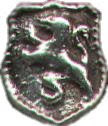Let me start by saying that I know this film is hokum. Several key elements have been twisted or made up completely in order to tell the story of the assassination of John F. Kennedy. Director Oliver Stone admits the changes, but stands by his belief that there was a conspiracy. This film is purely for entertainment, not for factual historic reflection.
And yet, that still doesn't prevent it being exceptionally enjoyable to watch. The story of the conspiracy, the assassination and the cover up makes a compelling film, and I doubt I would have enjoyed it half as much if anyone but Oliver Stone had directed it.
The film starts with the assassination and ends with the conspiracy.
The soundtrack makes this film. The court scenes and the black and white flashbacks, all made more vibrant by the dramatic and emotional score. Anyone want to guess the composer for the music? John Williams. Who else?
Score: B+
An entertaining film losing points only because it's difficult to tell which bits are real, which are exaggerated for dramatic effect and which bits are completely made up.
OQ:
Short Quote: Jim Garrison: I don't, I can't... I can't believe they killed him because he wanted to change things. In our time. In our country.
Long Quote: Jim Garrison: So what really happened that day? Let's just for a moment speculate shall we? We have the epileptic seizure around 12:15, p.m. distracting the police making it easier for the shooters to move into their places. The epileptic later vanished, never checking into a hospital. The A-Team gets on the sixth floor of the depository. They were refurbishing the floors that week, which allowed unknown workmen access to the building. They move quickly into position just minutes before the shooting. The spotter on the radio talking to the other two teams has the best overall view, the God spot. B-Team one shooter and one spotter with radio gear and access to the building, moves into the lower floor of the Dal-Tex building. The third team, the C-Team moves into the picket fence behind the Grassy Knoll, where the shooter and the spotter are first spotted by the late Lee Bowers in the watch tower of the rail yard. They have the best position of all. Kennedy is close and on a flat low trajectory. Part of this team is a coordinator who has flashed security credentials at people chasing them out of the parking lot. Probably 2-3 more men are in the crowd on Elm. 10-12 men. Three shooters. Three spotters. The triangulation of fire that
Trivia:
Every detail concerning the set for the
Is the only film that stars both
Dr M.T. Jenkins, the anaesthetist, plays himself in the film. He was genuinely surprised at the level of detail and research that had gone into preparation for that key scene. Even the tiles for the set of Trauma Room One were exactly the same shade of green he remembered (even though the scene itself is black and white in the finished film).
Rated #5 of the 25 most controversial movies of all time. Entertainment Weekly, 16 June 2006.
During the RFK shooting broadcast, Garrison is in the kitchen making a sandwich. On the counter is a jar of Hellmann's mayonnaise with a blue plastic lid. Hellmann's mayo had a metal "twist-off" lid in the '60s, not a plastic "screw-off" one. Who spots these things? Really?!?
The known facts are:
- Lee Harvey Oswald was an excellent shot. He was rated as a sharp shooter. In tests on a stationary target at more than twice the distance from the book depository to the car, he could hit a target 47 times out of 50, and at rapid fire.
- A computer reconstruction of the scene, based on the cinefilm shot, shows that a lone gunman from Oswald's position could take all three shots that hit the car and occupants, causing all the injuries reported.
- Oswald did go to
Moscow to defect, and upon his return to the US, had no difficulty at all getting back into the country.

No comments:
Post a Comment